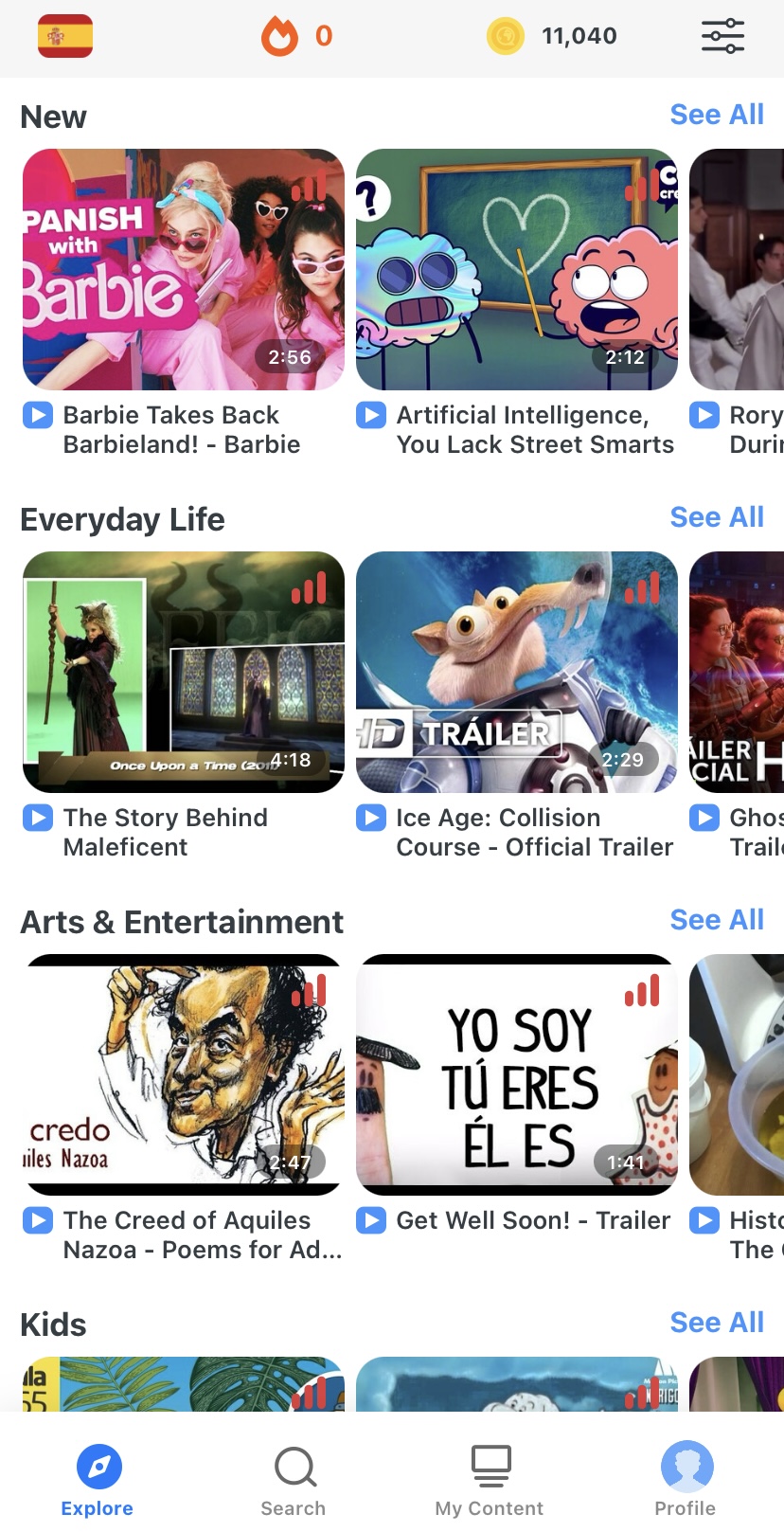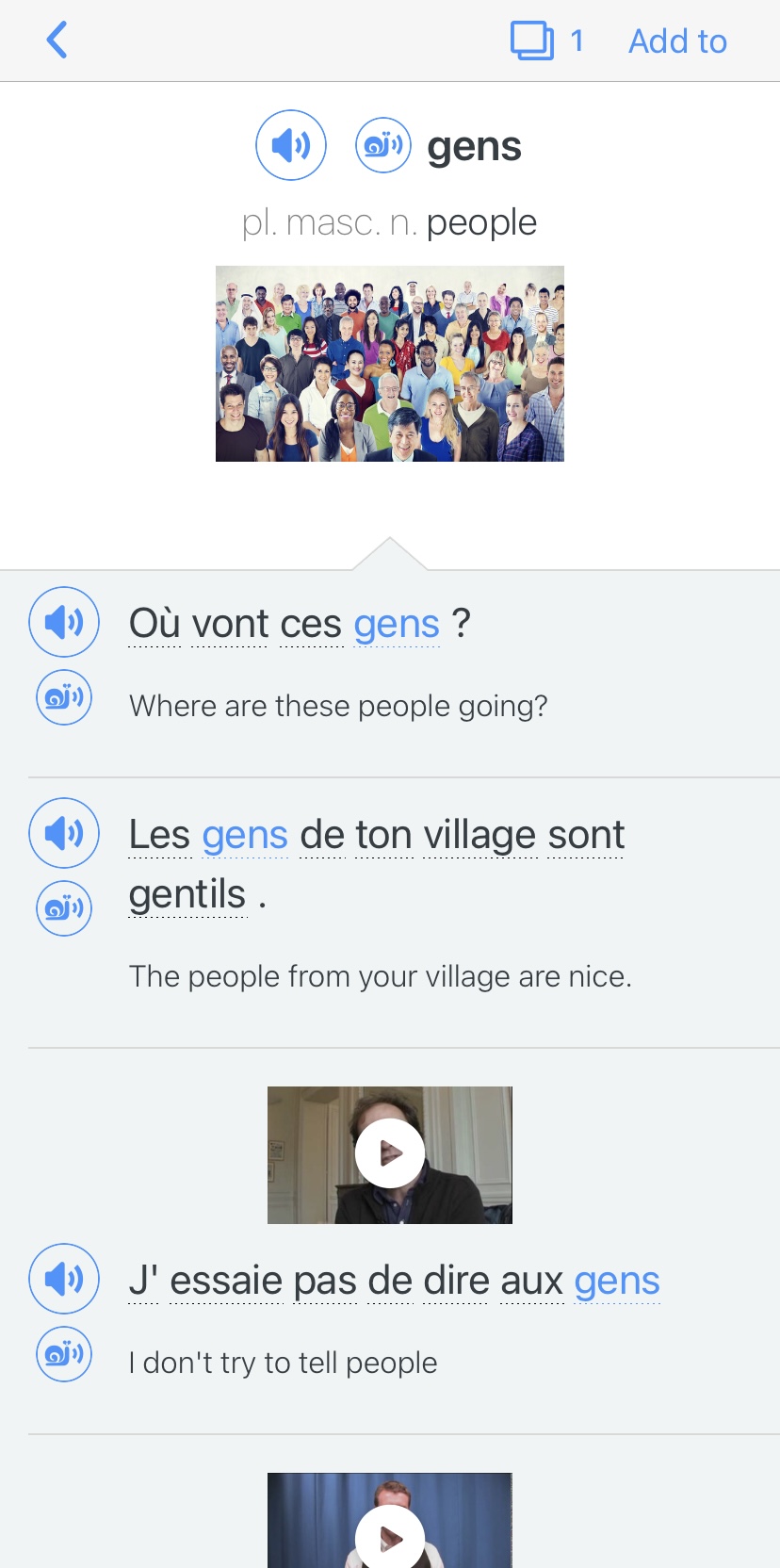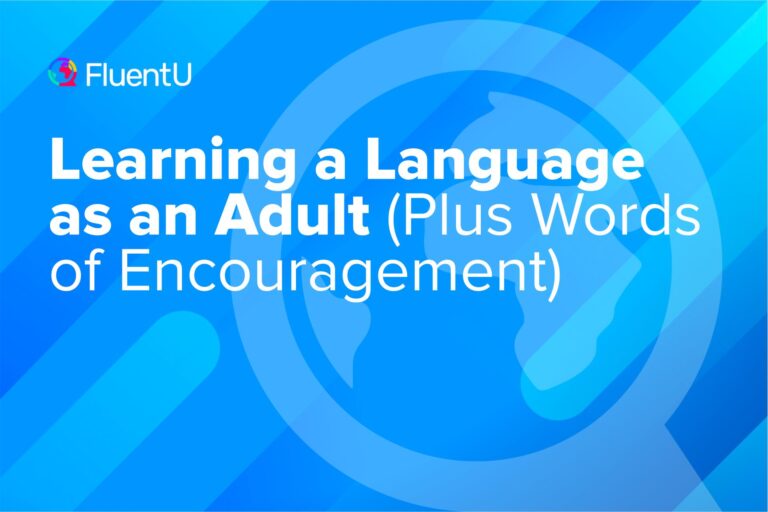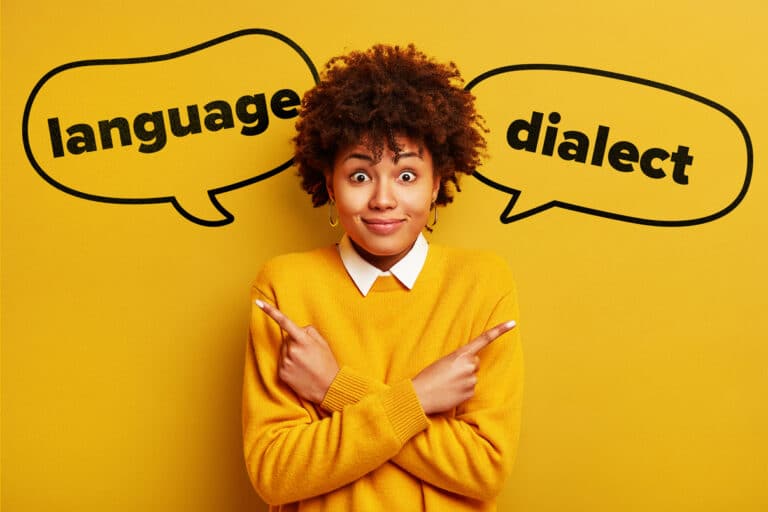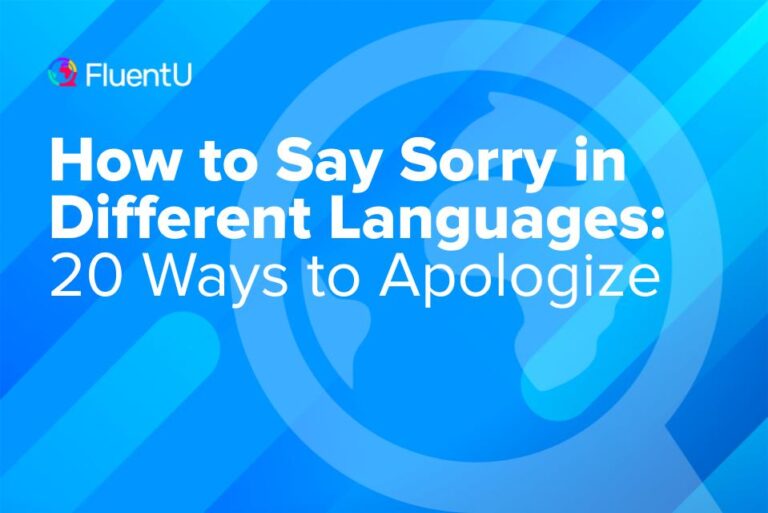What Language Should I Learn? How to Decide

While everyone’s language learning journey is different, each one has the same beginning: a choice of which language to learn. Learning a language is an investment, often of time, effort and money, and the most successful language learners often spend years mastering their chosen language.
But how do you choose which one to learn in the first place? Let’s find out.
Download: This blog post is available as a convenient and portable PDF that you can take anywhere. Click here to get a copy. (Download)
Finding Your “Why” for Learning
Believe it or not, the best way to learn a new language is to start with your “why.” Without a “why,” or one or two reasons to learn a foreign language, it’ll be very hard to progress.
Your “why” will guide the way because it gives you an attainable goal. When studying gets tough and it feels like you aren’t making any progress, having a “why” will help keep you motivated and on track.
Finding your “why” may not be easy—in fact, you may have multiple reasons to learn a second language. To figure it out, you should ask yourself questions:
- Are you learning a language for fun?
- Are you learning for work, study or immigration?
- Are you learning a language to watch TV shows or movies, or listen to music in that language?
- Are you simply entranced by the language and culture?
It’s also important to think about what kind of language you want to learn:
- Are you looking to test yourself with a difficult language that’s different from anything you’ve ever learned before?
- Are you looking to get the most “bang for your buck” by learning one of the world’s most commonly spoken languages?
Once you find out your “why,” choosing a language should be easy.
Something to keep in mind, though: When deciding which language you want to learn, you should also consider how difficult the language will be for you to learn. The more difficult the language, the more challenges you’ll face and the bigger time commitment you’ll need.
Learning a Language That’s “Easy” for English Speakers

Okay, this is somewhat flippant—we all know that no foreign language is easy to learn. However, it can be extra motivating if you can see quick progress, especially if this is your first time learning a foreign language.
The key point is to pick something that’s not too dissimilar from your native language. Here are a couple examples if your native language is English.
Spanish
Similar languages: Italian, Portuguese, French
Its popularity is one of the reasons Spanish is such a great choice—and the language isn’t too incredibly difficult to pick up.
Even if you didn’t take Spanish lessons in school, it isn’t hard to find someone nearby who speaks the second most-spoken tongue on the planet. This will make it a whole lot easier to practice.
Aside from access to a huge pool of hispanohablantes (Spanish speakers), the language itself lends itself to fast learning. Unlike the irregularity of English phonology and orthography, Spanish has a very straightforward pronunciation system.
Meanwhile, thanks to the Latin roots of Spanish, there’s a wealth of vocabulary already at your fingertips. Nation = nación, music = música, flower = flor, and so on—not to mention the numerous English loan words in Spanish (email, catering, fútbol).
That’s not to say that Spanish is without its challenges. A lot of the grammar is very different from English and Spanish learners have to deal with the infamous subjunctive. However, these challenges can be overcome, and once you’ve gotten there, you’ll be ordering tapas like a pro.
German
Similar languages: Dutch, Afrikaans
If you’re looking to move away from the Romance languages, German should be your first stop.
Despite having a huge amount of Latin influence, English is actually a Germanic language. The vocabulary can be quite similar and there are a number of cognates. German pronunciation is also quite straightforward.
Due to the history of English, which involved Germanic Anglo-Saxons working the land while being mostly separated from the French-speaking aristocrats, lots of simple language has kept its Germanic roots.
This includes religious terminology (God = Gott, church = kirche), language for animals (cow = kuh, cat = katze) and words for family members (father, mother, brother and sister are vater, mutter, bruder und schwester).
Again, German also has its challenges. Due to the German way of creating compound words, much of its vocabulary can be intimidating. It also results in some curiosities, such as the triple F in schifffahrt. (“boat travel,” a compound of the words schiff and fahrt—”ship” and “journey.”)
Another challenge is that German, like Latin, has numerous grammatical cases to get your head around, as well as three genders to learn. Not to mention the fact that many Germans speak fantastic English, and it can be hard to persuade them to let you practice!
Learning a Language for Travel

English and Spanish are the best languages for travel due to their near-ubiquity. Nevertheless, there are a few others we can usefully add to the armory.
If you plan to travel short term, it’s good to know a “survival level” of that language. If you plan on traveling long-term, meaning your trip will last longer than a month, learning beyond the survival level of the language would be beneficial.
Getting a higher level in your target language will allow you to really connect with a place, its culture and its people. You might even make some good friends!
If you’re planning on learning a language for travel, another way to narrow down the answer to “What language should I learn?” is to take a few lessons or watch a few videos on language learning apps or programs like FluentU, for example.
FluentU takes authentic videos—like music videos, movie trailers, news and inspiring talks—and turns them into personalized language learning lessons.
You can try FluentU for free for 2 weeks. Check out the website or download the iOS app or Android app.
P.S. Click here to take advantage of our current sale! (Expires at the end of this month.)

Mandarin Chinese
Similar languages: Cantonese
The language with the biggest proportion of native speakers in the world, Mandarin Chinese is notorious in the anglophone world for its complexity.
Don’t let that put you off! Mandarin opens up China and the rest of Asia as a travel destination, and is spoken by one in six people around the world. What’s more, it’s not as difficult as people would have you believe.
Okay, the writing system can be tough—instead of an alphabet, there are approximately 50,000 different characters to deal with. But in fact, an educated Chinese person will only know around 8,000, and you probably only need 2,000 to be able to read well.
Moreover, the sentence structure of Mandarin is pleasingly straightforward.
Take this example:
- 好餐厅在哪里?(hǎo cān tīng zài nǎ lǐ?) — Where is a good restaurant?
Break this down, and it’s fascinating to see how it comes together.
- 好 (hǎo) — good
- 餐 (cān) — meal
- 厅 (tīng) — hall
- 在哪里 (zài nǎ lǐ) — where is it?
The focal noun of the sentence (in this case, the restaurant or “good meal hall”) comes first, with the modifiers coming afterwards. Each character has a sound and a different meaning, and they combine beautifully.
The phonology is tricky—not only do you have to get your head around all the different vowel and consonant sounds, but you also need to get the infamous Chinese tones correct. There are four to master—although that is fewer than in Cantonese!
Cantonese is similar, however, and uses the same script—well, sort of. To make things a bit more interesting, there are traditional and simplified Chinese characters. Cantonese is written in traditional characters in Hong Kong, whereas China uses simplified characters.
Meanwhile, various Chinese characters found their way into Japanese as the script called kanji, so learning Mandarin is also a great jumping-off point for other Asian languages.
Russian
Similar languages: Ukrainian, Polish
Learning Russian means another new alphabet to pick up, but it’s still a very useful tongue. Much of ex-Soviet Eastern Europe still teaches Russian as a second language in schools, so mastering the language will open up a new part of the world.
Again, the main challenge is obvious: You have to learn the Cyrillic alphabet. The good news is that, unlike Chinese languages, there are only 33 letters to learn rather than thousands. Once you’ve got them, you’ve got them.
Russian is the most widely spoken of the Slavic language family. Once you master Russian, you’ll also have easier access to Ukrainian, Polish and a variety of other eastern European languages.
Learning a Language for Work Opportunities
A good language for work is one that’s widely spoken or one that’s spoken in the place where you want to find a job.
You could also learn one of the official UN languages since they’re from the biggest economies around the world. Many people also work jobs that require a second language or are interested in the most useful languages to learn for medicine.
Furthermore, there are many jobs for language majors such as in teaching or translation. You can teach virtually any language in a place where there’s a need.
French
Similar languages: Spanish, Portuguese, Italian
In both Europe and North America, French is a powerful language—think Quebec and the EU—and a staple of language education. And let’s not forget all of the Francophone areas in Africa and elsewhere in the world.
It’s also fair to say that, unlike native speakers of other Romance languages, French speakers are often reluctant to engage in English (or at least they have that reputation). This makes a mastery of the language of Proust a valuable asset—and also means it’s very easy to find people to practice with!
Like Spanish, as mentioned above, French is part of the family that includes a host of other European languages, and any high school Spanish lessons will come in handy when it comes to French grammar and vocab!
Chances are you’ve heard French out and about as well, not to mention the loanwords and phrases English has adopted (vis-a-vis, déjà vu, voilà). Enjoy being able to tell all your friends the meanings of all those fancy words on the menu!
The biggest challenge is often pronunciation. While French phonology is fairly regular, there are numerous vowel combinations, often involving silent consonants. This can make it very difficult to differentiate between words. Take for example these five homophones:
- Vers (towards)
- Vers (verse)
- Ver (worm)
- Verre (glass)
- Vert (green)
As an English speaker, it’s not my place to criticize difficult pronunciation. Nevertheless, this can be a challenge!
Arabic
Similar languages: Farsi, Hebrew
Go to Morocco and alongside French you will hear Arabic, of the most fascinating languages.
Of course, it’s not limited to Morocco—in fact, Arabic is an official language in 27 countries. With the Middle East becoming an increasingly important region due to politics and commerce, a mastery of Arabic will definitely score you points with potential employers.
Arabic is certainly not without its challenges, not least its vastly different vocabulary from European languages and its beautiful but alien script, which is written from right to left.
However, perhaps the biggest challenge is the range of dialects. When a language covers such a huge area, it’s only to be expected that there will be a huge variation in the way it’s spoken!
There are three main varieties of the language:
- Levantine Arabic. Spoken around Lebanon, Syria, Jordan and Palestine, it boasts 20 million speakers worldwide. Although it has no official status, it’s the national working language in Lebanon and is used at home and among friends—as well as in written communication, the media and government. It contains influences from Hebrew, Greek, French and other foreign languages.
- Egyptian Arabic. As the name suggests, this dialect is from Egypt and is spoken by 52.5 million people. This form is understood in many parts of the Arab world due to Egypt’s cultural influence.
- Gulf Arabic. Speakers in Kuwait, Qatar and the UAE are the main users of this dialect, which has 10 personal pronouns. Gulf Arabic maintains gender differentiation, whereas others have done away with it.
All of these are in addition to Modern Standard Arabic, which is the official language in most of these countries!
Which to learn to begin with? London Arabic Tuition recommends learning Levantine Arabic first—the others will be easy to pick up afterwards.
Learning a Language With a Different Script

Bored with the Latin alphabet?
Some of the languages already mentioned use other scripts, but if you really want to throw yourself into a beautiful, challenging, unique new writing system, try one of these.
Hindi
Similar languages: Urdu, Bengali, Punjabi, Nepali
Although India has many tongues, Hindi is the fourth-most-spoken first language in the world.
I love, love, love the look of Hindi. The curling characters hang from a bar, each representing a consonant sound.
Then, diacritics—the little extra marks that modify characters, like an umlaut (the two dots over the u of Brüder) in German or a cedilla (the wiggle under the c of façade) in French—alter the vowel that follows. If there’s no diacritic, the vowel is -a.
Take one of the best known Hindi words—namaste, meaning “hello.” In Hindi—or, strictly speaking, in the Devanagari alphabet—that is written as नमस्ते.
If that looks unintelligible, let’s break it down character by character:
- न (na, no diacritic)
- म (ma, no diacritic)
- स (sa, combined with त [ta] + े [-e diacritic] = ste)
It may look alien to those of us brought up on the Latin alphabet, but once you crack the logic, it makes perfect sense—and is stunning on a page.
Japanese
Similar writing script to: Chinese
Japanese has not one, not two, but three “alphabets” to get your head around.
Kanji are Chinese characters, and therefore the most numerous and complex of the three alphabets. Most words in Japanese use kanji, and there is no rule—they just have to be learned. For example:
- 恋 (koi) — love
- 猫 (neko) — cat
- 日本 (nippon) — Japan
Like the characters needed for Mandarin, there are upwards of 50,000 in total, although approximately only 3,000 Chinese characters are in common use in Japan.
The other alphabets—the kana alphabets—are simpler. There are two of these, each with around 50 characters. Each character represents a sound or mora, either a vowel, consonant with vowel or a nasal n sound.
- Hiragana is used primarily for grammatical purposes, such as adding suffixes to indicate tense—compare 食べる (taberu, “eat”) and 食べた (tabeta, “ate”). It can also be used to spell out complex or obscure kanji phonetically.
- Katakana most often represents loan words from other languages. For example, I once wrote about a scene in Haruki Murakami’s “Kafka on the Shore” which featured Colonel Sanders, of KFC fame. In the katakana, this was rendered as カーネル・サンダース (kāneru sandāsu).
Japanese is fascinating with challenging grammar, although relatively simple phonology.
However, it’s spoken only in Japan and its only relatives are endangered members of the Japonic family, so this might be a language you don’t get to break out too often if you don’t live in Japan or already have regular contact with Japanese speakers.
Still, it’s very interesting and it’s definitely a good language to consider.
Learning a Language That’s Unique

This section might be for the more experienced polyglots among us.
If you’re bored by “everyday” languages, perhaps you want to find something to really break out as a party trick.
If that’s the case, check out these foreign languages, which are sure to mark you as the linguistic hipster that you are.
Norwegian
Similar languages: Swedish, Danish
Scandinavians are renowned for their fantastic English, and perhaps this is part of the reason why so few people take the time to learn the languages spoken there.
However, there’s a hidden bonus—learning Norwegian essentially gives you three languages for the price of one! It’s extremely similar to Swedish and Danish, and the three are often considered mutually comprehensible.
Popular Scandinavian noir shows featuring detectives from Denmark and Sweden make jokes about this, with Danish usually the butt of the joke—like in this hilarious video.
Why learn Norwegian? The distinctive and wonderful sound of the language is a reason in itself. What’s more, despite its hipster credentials, it’s not so distinct from English as to be a complete departure.
There are numerous cognates—I’m sure you wouldn’t need me to tell you that gress, katt and vinter mean grass, cat and winter respectively—and the accent isn’t too unusual. Furthermore, Norwegians will love you for having the desire to learn their language!
Swedish and Danish could be just as good to learn, but Norwegian is less commonly taught and therefore that little extra special.
Quechua
Similar languages: Aymara
Quechua is the only minority language on this list, so it’s fitting that it should be in this section.
Quechua is, however, the most popular second language across Peru and Bolivia, where there’s an enormous drive to maintain the indigenous tongue.
This could be a great language to pick up to deepen your understanding of Spanish, or if you’re looking to travel to the part of the world where it’s spoken.
What’s more, it shouldn’t be too hard to learn! It includes benefits such as:
- No irregular verbs, nouns or adjectives
- No grammatical gender
- No articles
- Regular cases
Obviously the vocabulary and grammar are bound to be unlike anything you’ve experienced, but you didn’t want this language learning journey to be too easy, right?
No self-respecting language nerd can do without speaking a minority language, so give it a go! Other options along this theme include Irish, Catalan, Khoekhoe or the dialects of Italy.
So how will you choose a language to learn from a world of choice? While there’s no wrong answer to that question, I hope this guide has inspired you, and gotten you ready to start exploring a whole new world!
And One More Thing...
If you're like me and love learning languages through real-world content, FluentU is a game-changer. With FluentU, you're not just memorizing words—you’re learning how native speakers actually use them.
With our newest feature, you can now bring FluentU’s interactive tools to any subtitled content on YouTube or Netflix—or even import YouTube videos directly into your FluentU account!
You’ll also get access to a huge variety of content in our curated video library, from movie trailers to news clips, music videos, and more. The best part? FluentU makes this native-language content accessible for learners of all levels.
While you watch, you can tap on any word in the interactive subtitles to see a definition, an image, audio, and useful example sentences. Want to practice new words later? Add them to your flashcards with one click. No more pausing to look up and write down new words!
And FluentU helps you actually remember what you learn with personalized quizzes, plenty of example sentences, and extra practice with the words you find difficult.
Ready to start learning in a more natural, immersive way? Try FluentU on your computer or tablet, or download the FluentU app from the App Store or Google Play. Click here to take advantage of our current sale! (Expires at the end of this month.)


